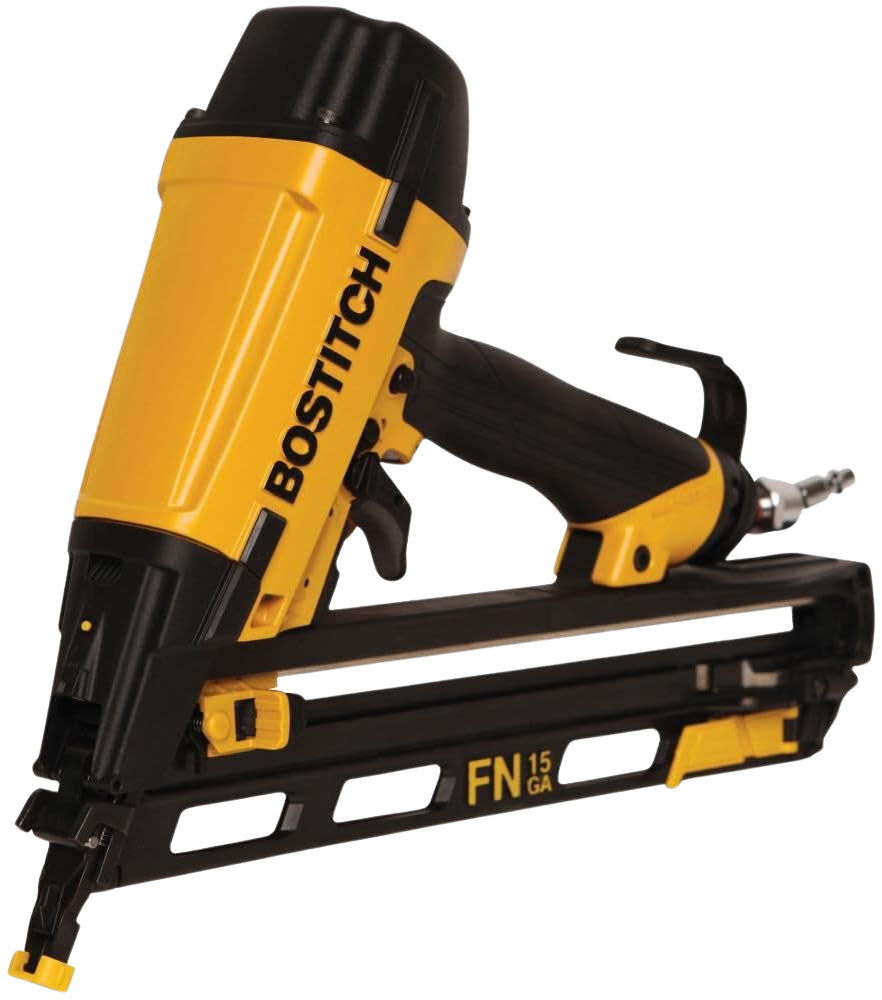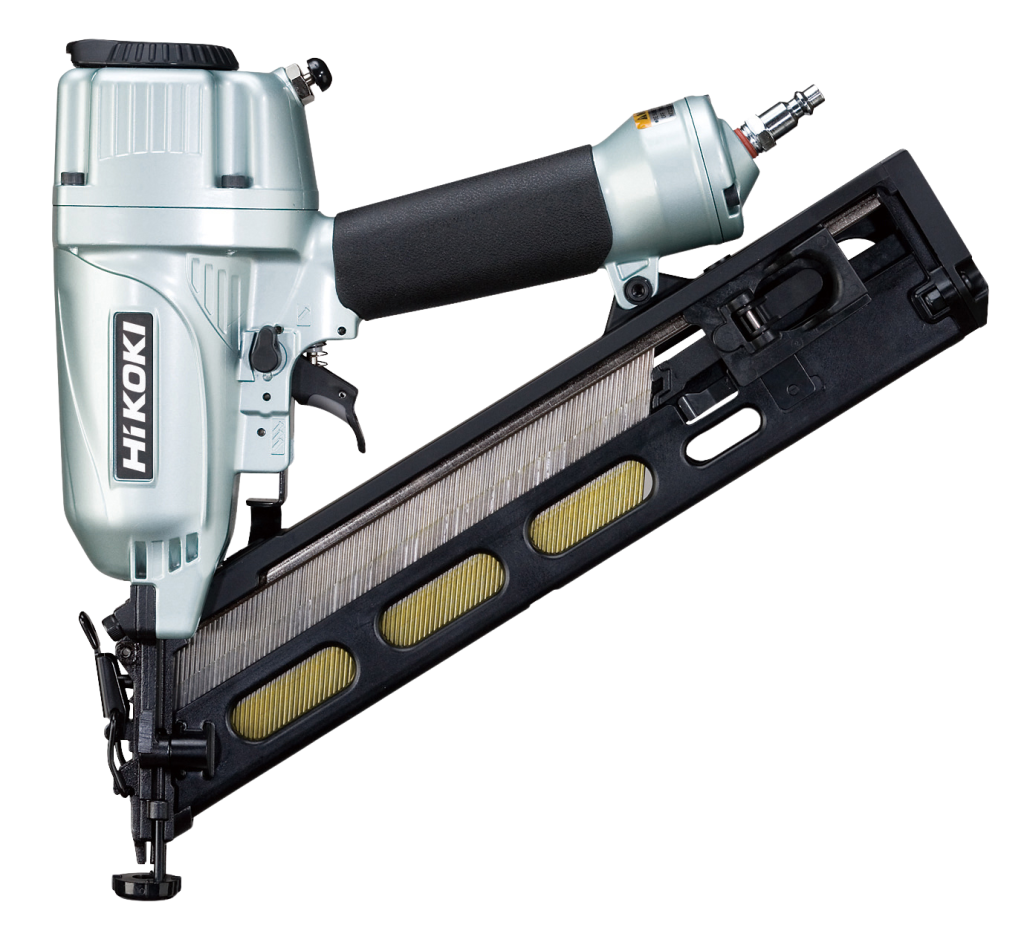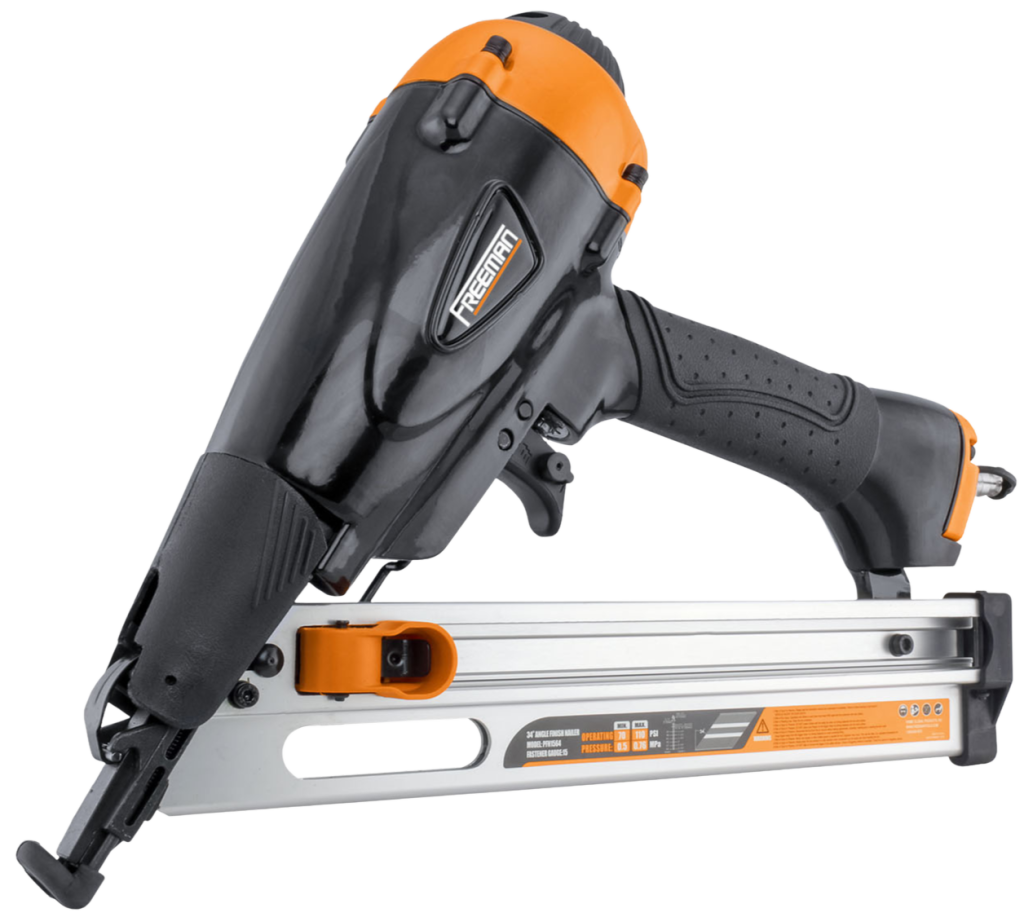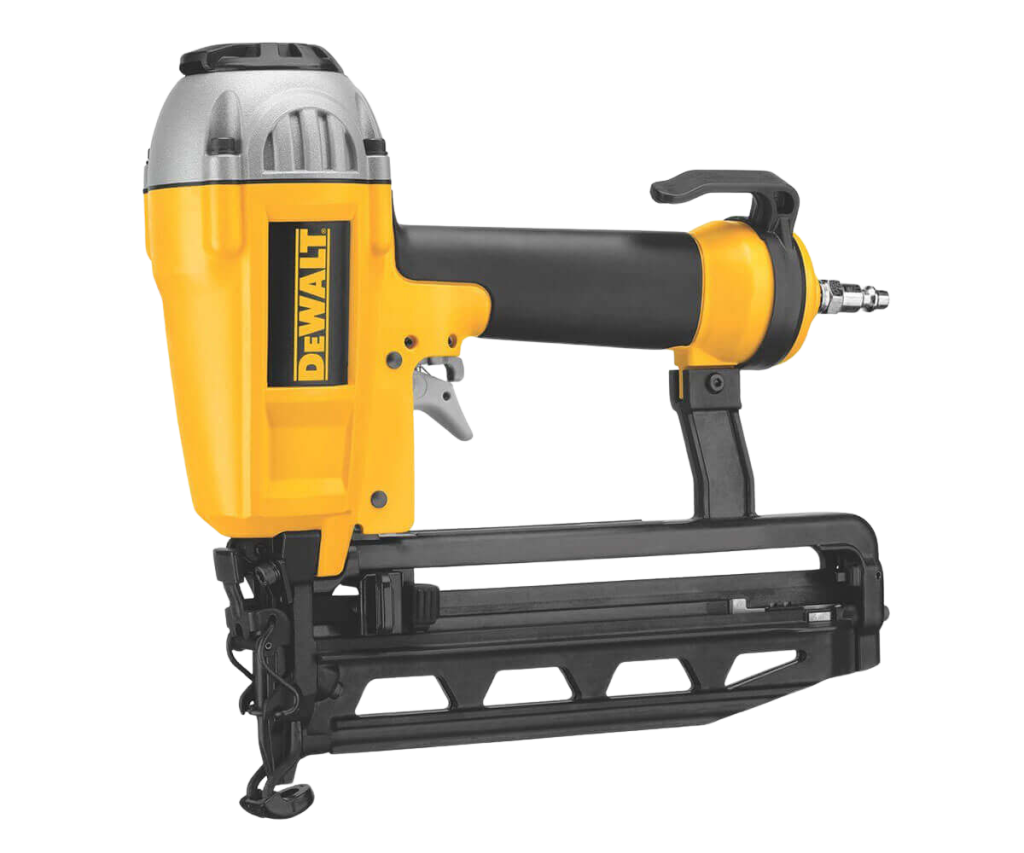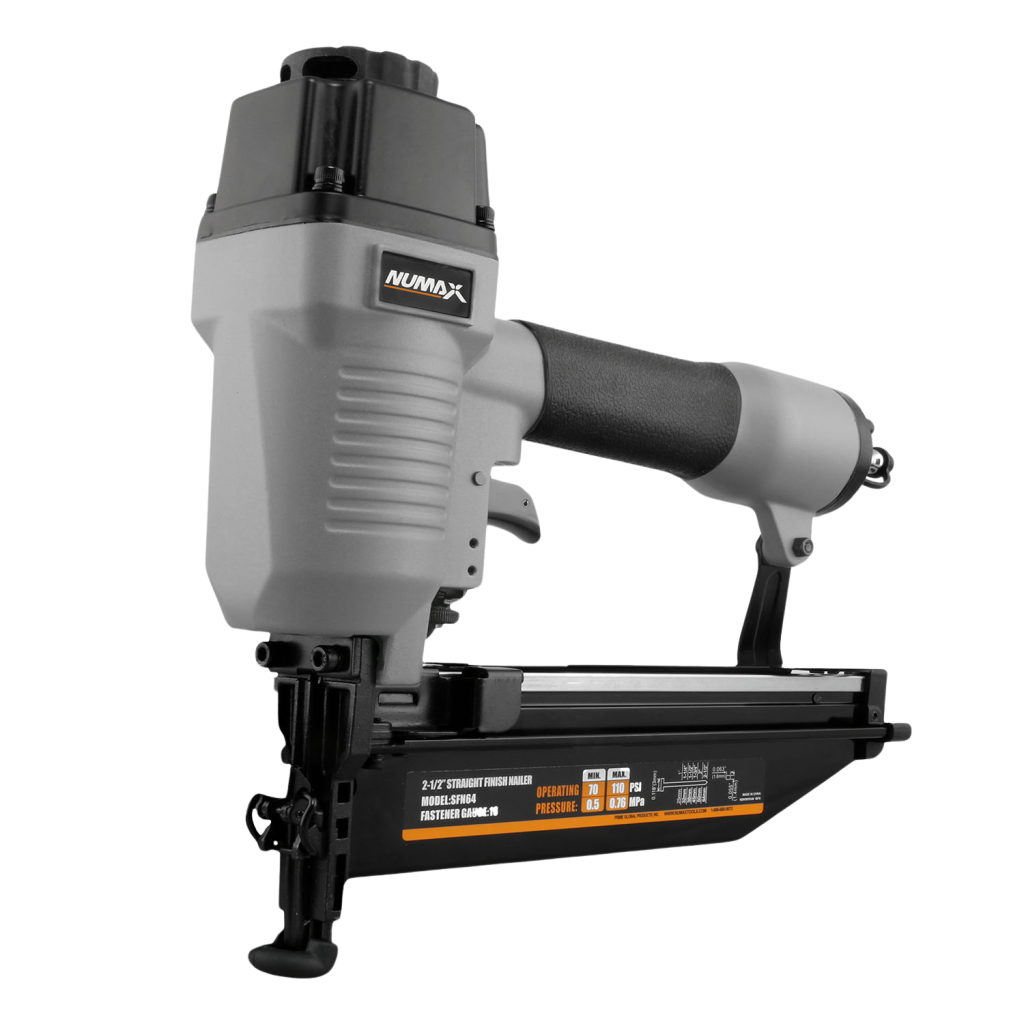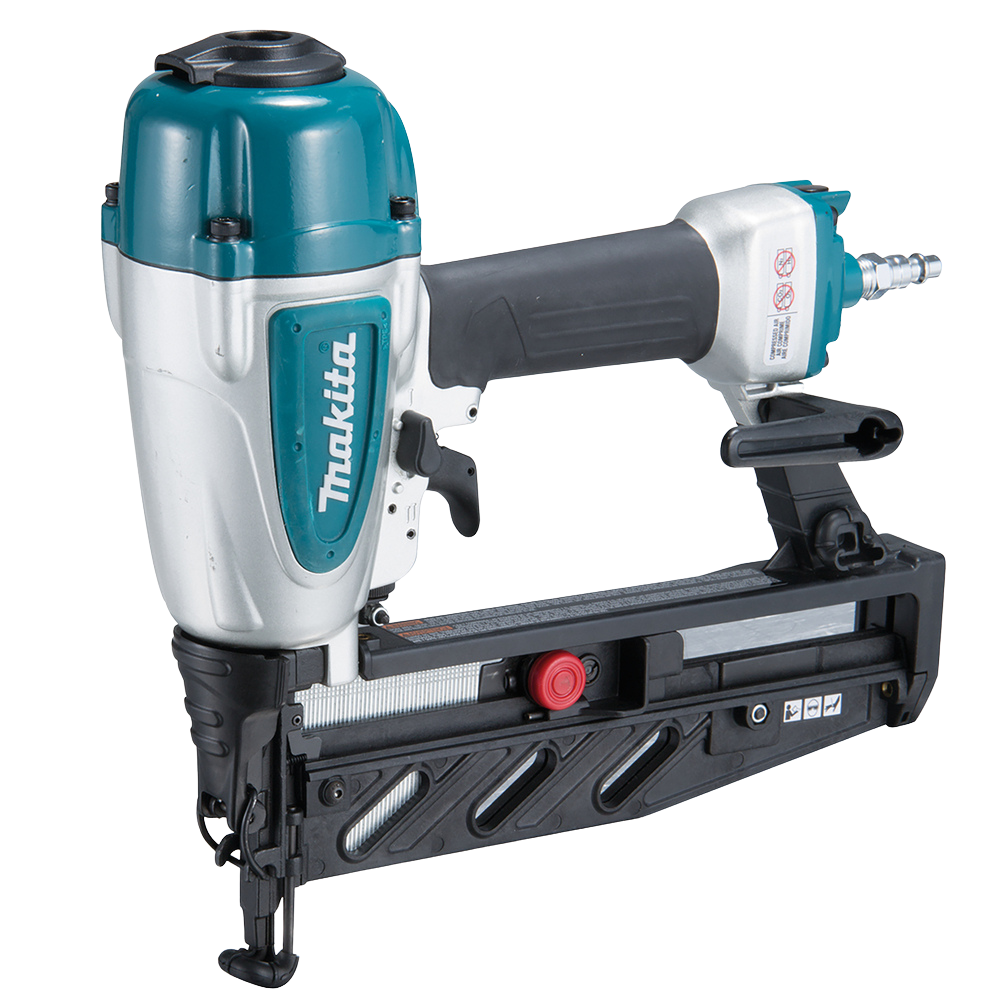Best Finish Nailer of 2024 for Home and Pro User
NAILGUNGUIDE BEST OF
From 15-gauge to 16-gauge, pneumatic to battery powered, NailgunGuide’s best finish nailer review covers all. Compare these finish nailers to find one that fits your needs.
There isn’t just one Finish Nailer that’s perfect for everyone. What works best for you will depend on your project, working surface, the type and amount of nailing you do and budget. Ideally you will be matching what finish nailer do and what you are intend to do with it to find what is best for you.
Finish nailer work best for project like Installing baseboard, door and window casing, large crown molding, door frames, Interior carpentry – cabinets, paneling, caskets, chair rails, wooden furniture, and fastening large decorative trim. Task performed by finish nailer will give you a good idea on how finish nailer can be used. If you are involved in a similar project than you are in right place. However a lot of other thing you need to consider before you can buy your finish nailer. Our Finish nailer buying guide will provide you all big and small thing, tips and tricks to choose best finish nailer. You can also explore our recommendation for best finish nailer of 2024 and even learn more from our detailed finish nailer reviews.
Not sure which finish nailer you looking for?
Read our finish nailer buying guide, learn how to pick the right finish nailer for you.
Summary of Best Finish Nailer of 2024
Premium Pick
15-Gauge Angled Finish Nailer
Perfect tool for tackling the detail work around windows and doors, apply crown
molding, or furniture projects.
Power Source Corded-Pneumatic; 70 – 120 PSI
Max Fastener 130 15-Gauge FN angled
finish nails from 1-1/4 in. to 2-1/2 in.
Weight 3.8 lbs.
Best All-Around
15-Gauge Angled Finish Nailer
Get professional finish and improved control for flush fastening into varying materials.
Power Source Corded-Pneumatic; 70 – 120 PSI
Max Fastener 100 15-gauge angled finish
nails from 1-1/4 in. to 2-1/2 in.
Weight 4.2 lbs.
Best Value
15-Gauge Angled Finish Nailer
Ergonomic design with lightweight body best for doors moulding, furniture & cabinetry.
Power Source
Corded-Pneumatic; 70 – 110 PSI
Max Fastener 100 15-gauge angled finish
nails from 1-1/4 in. to 2-1/2 in.
Weight 4.7 lbs.
Premium Pick
16-Gauge Straight Finish Nailer
Oil-free pneumatic nailer can be used in
a wide range of finishing jobs quickly
and efficiently. Best for interior and exterior trim, cabinetry and fine woodworking
Power Source Corded-Pneumatic; 70 – 120 PSI
Max Fastener 100 16-gauge straight finish nails from 1 in. to 2-1/2 in.
Weight 3.85 lbs.
Best All-Around
16-Gauge Straight Finish Nailer
Great for all kinds of interior & exterior
finish & trim, furniture, cabinet work, window casing & much more.
Power Source Corded-Pneumatic; 70 – 110 PSI
Max Fastener 100 16-gauge straight finish nails from 1 in. to 2-1/2 in.
Weight 4.5 lbs.
Best Value
16-Gauge Straight Finish Nailer
Ideal for trim work, baseboard & crown
molding installation, flooring & other
woodworking applications
Power Source Corded-Pneumatic; 70 – 120 PSI
Max Fastener 100 16-gauge straight finish nails from 1-inch to 2-1/2-inch length
Weight 3.8 lbs.
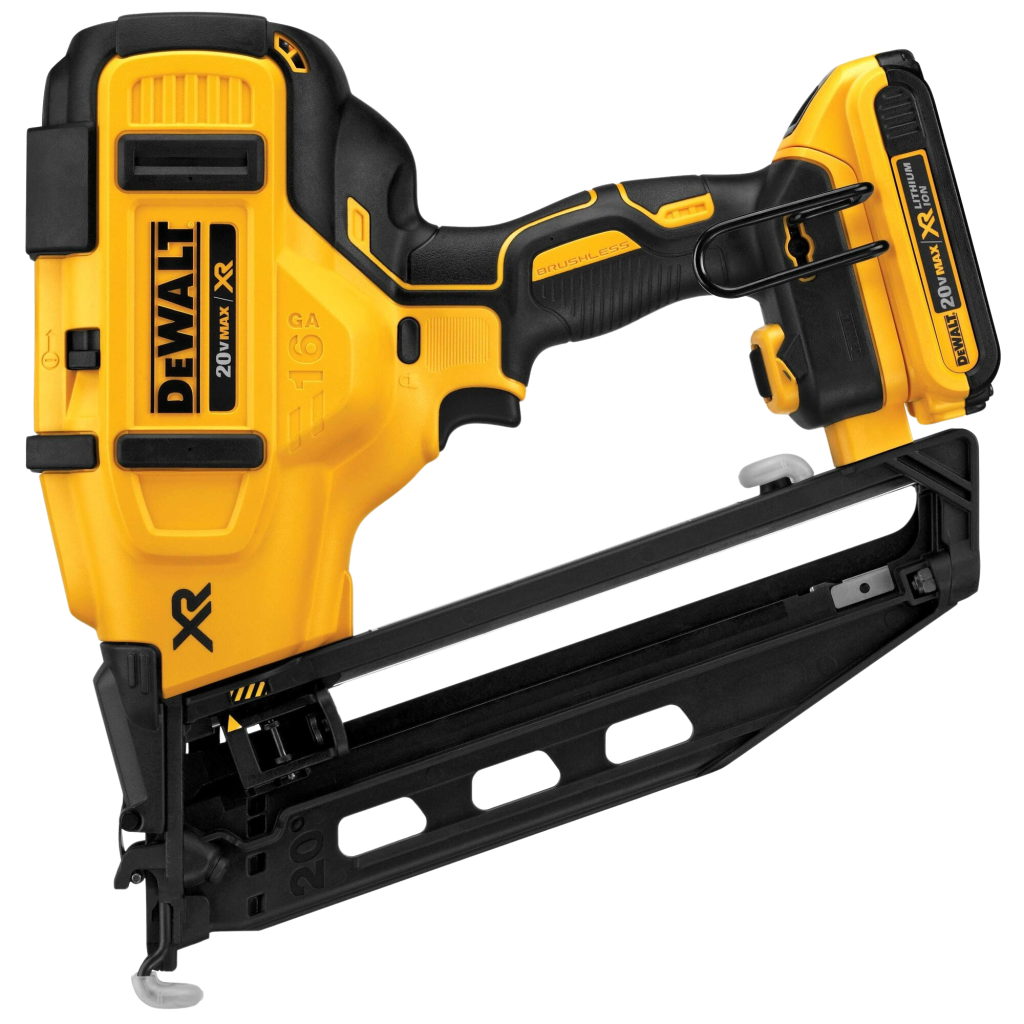

DEWALT DCN660D1 16GA 20-Degree Angled Finish Nailer
NailgunGuide Rating
Premium Pick
16-Gauge Cordless Finish Nailer
Combination of XR series Brushless
Motor and 20-degree angled magazine
makes it a perfect nailer for all kind of
finish project
Power Source
Cordless-Electric; 2.0Ah 20V Li-ion battery; capable of firing 800 nails per charge
Max Fastener 110 16-gauge angled finish
nails from 1-1/4 in. to 2-1/2 in.
Weight 5.2 lbs.
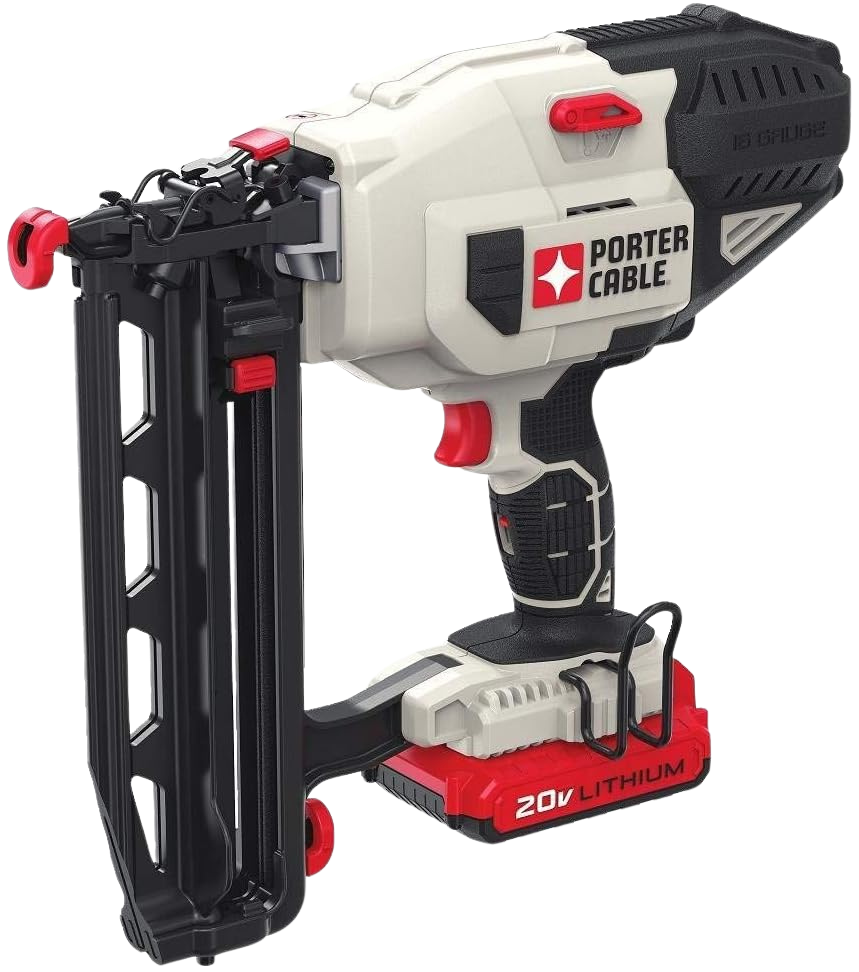

PORTER-CABLE PCC792LA 16GA Straight Finish Nailer
NailgunGuide Rating
Best All-Around
16-Gauge Cordless Finish Nailer
Consistent firing power into various
materials such as baseboards, crown
moldings, cabinet assembly and
climate conditions
Power Source
Cordless-Electric; 4Ah 18V Li-ion battery
capable of firing 800 nails on a single charge
Max Fastener 100 16-gauge straight finish nails from 3/4 in. to 2-1/2 in.
Weight 6.15 lbs.
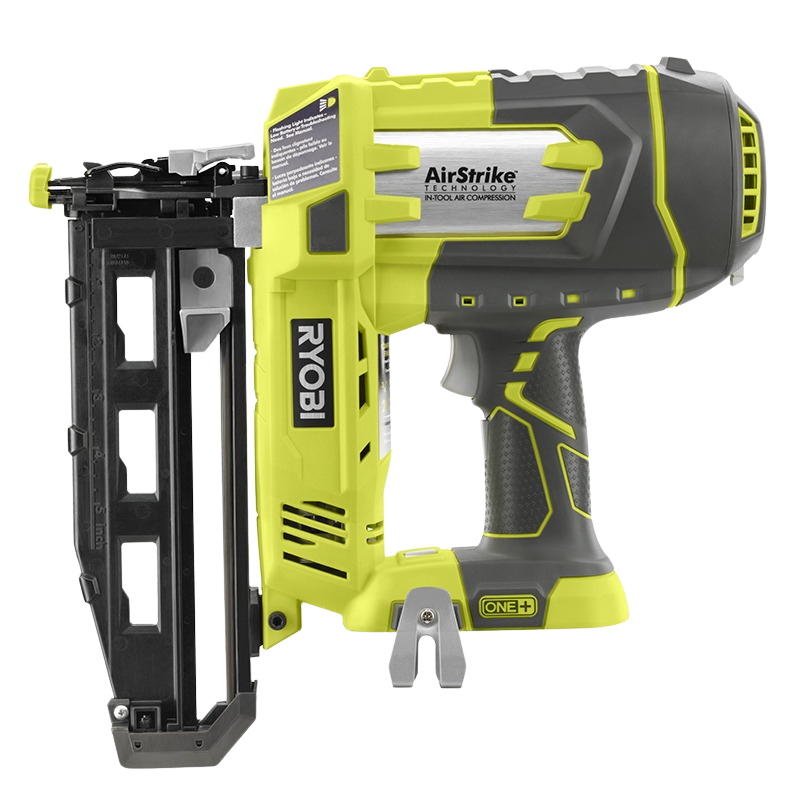

Ryobi P325 One+ 18V Li-ion Battery Powered 16 Gauge Finish Nailer
NailgunGuide Rating
Best Value
16-Gauge Cordless Finish Nailer
Highly sought by DIY and homeowner for
woodworking. Part of Ryobi One+ family
18V Li-ion series compatible with
P100, P102, P103, P104, P105, P107, and
P108
Power Source Corded-Pneumatic; 70 – 110 PSI
Max Fastener 100 16-gauge straight finish nails from 1 in. to 2-1/2 in.
Weight 4.5 lbs.
Your Guide to Find Right Finish Nailer
Finish nailers are most commonly used in trim carpentry along with brad and pin nailer. Professional carpenters employ full range of 15, 16, 18 and 23-gauge trim nailer for achieving fine finish. But homeowner and DIYer will be looking for one tool that can be used for virtually every trimming task on hand. That tool is none other than finish nailer commonly available in 15 and 16-gauge variations. One thing that make choosing a finish nailer a difficult job for you I think is it’s variations, you start with 15 or 16 gauge then choose between straight or angled magazine style and lastly power source. Also some features commonly found in most finish nailer and some design and build quality features unique to few finish nailer kits that make them best finish nailer. We have sorted all those finish nailer design, build features and specification that you will find handy and may assist others to spot best finish nailer.
Straight Vs Angled: Magazine Style that Work
This easily noticeable design feature can make huge differences in finish nailer performance may not seem important to the untrained eye. The term straight and angled refer to angle of finish nailer magazine. Understanding the difference between straight and angled finish nailer is the first step to find right finish nailer for you. If you are curious to know why there is a straight and angled finish nailer in the first place? Than we have your attention and may shed some light on that. Simple answer to that question is all kind of nail gun has one particular problem that is you just cannot rely on a type of nailer to do all your fastening job. Straight and angled finish nailer are designed to serve different niche within finish nailer family.
Ability to reach into tight spaces is the most prominent difference of working with straight and angled finish nailer. Angled design of the magazine let you reach tight spot without any difficulties and also extended nose further help to reach into tight spaces formed in the corners. If your project will run into a lot of tight spot and hard to reach corners than you certainly can go for an angled finish nailer. Straight finish nailer cumbersome magazine can make your work more difficult and sometimes impossible.
Straight finish nailer accept T-shaped nailhead and D-shaped nail head is commonly used in angled finish nailer. Type of nail used in straight and angled finish nailer and nail gauge will definitely influence your finish nailer buying decision as it directly affect nailing performance. In terms of nail gauge straight finish nailer capable of shooting thinner 16-Gauge nail that go deep into woodwork without the risk of splitting wood along its grain required in delicate trimming and finish job. Whereas much thicker, stronger 15-Gauge nail used in angled finish nailer ideal for finishing work that require more holding power.
Finally angled design help accurate positioning and firing of nail, easy nail replacement and light construction make them perfect choice but all this comes at a high price. On the contrary straight nailers are bulky and cheap however lacks in accuracy and agility found in angled finish nailers.
Pneumatic or Battery Powered Finish Nailer
Finish nailer kits available in market are mostly corded pneumatic, battery and gas powered cordless finish nailer. Good news is over the year finish nailer capacity, build quality, features and price changed a lot and there are tons of finish nailers available to choose from that suits your preferences and budget. It’s good to have a lot of options for you but it also make you confused about which one is best. We suggest you to narrow down your shortlist by answering a few questions. First you need to decide how you want to use your finish nailer in terms of your project on hand and future usage. Most of the best finish nailer are pneumatic and mostly used by professionals. While pneumatic nailer are the least expensive and easy to use that rely on air compressor for its nailing power which you need to buy separately. The other best option is battery powered finish nailer that gained popularity lately due to their mobility, less maintenance and more suitable for home and DIYer. Downside is they are heavy and expensive and usage is limited to battery charge. You may also look for gas powered and electric powered finish nailer, they are least popular and not easy to get. You can always learn more about power source required for nail gun from our Nail Gun Buying Guide and Recommendations.
Finish Nailer Type by Fastener Gauge
You probably got some idea about 15-gauge and 16-gauge nailer from our discussion in straight vs angled finish nailer. Let us add some more detail on that to help in finding best finish nailer. Finish nailer gauge actually measure the diameter of finish nail like an electrical wire. Thicker nail represented by lower gauge number and higher gauge number for thinner nail. So how does it affect your choice of finish nailer? These tools fire nails up to 2-1/2 inches in finish or trimming surface, best for interior carpentry and both can be used for installing crown molding, cove molding, baseboard, chair rail, door and window casing, door frames, and more. Large diameter of 15-gauge nail will give great strength and holding power but will create big hole on your working surface that may not look pretty. Instead you will be looking 16-gauge for great finish with less holding strength. Also note that 15 and 16-gauge magazine are not compatible. Most finish carpenter probably own 15 and 16-gauge finish nailer. But overlapping application of these two tool will give hard time to home owner and DIYer who is looking for one tool to perform multiple job. We suggest 16-gauge for home owner and first time buyer as it can be used in both small and big projects.
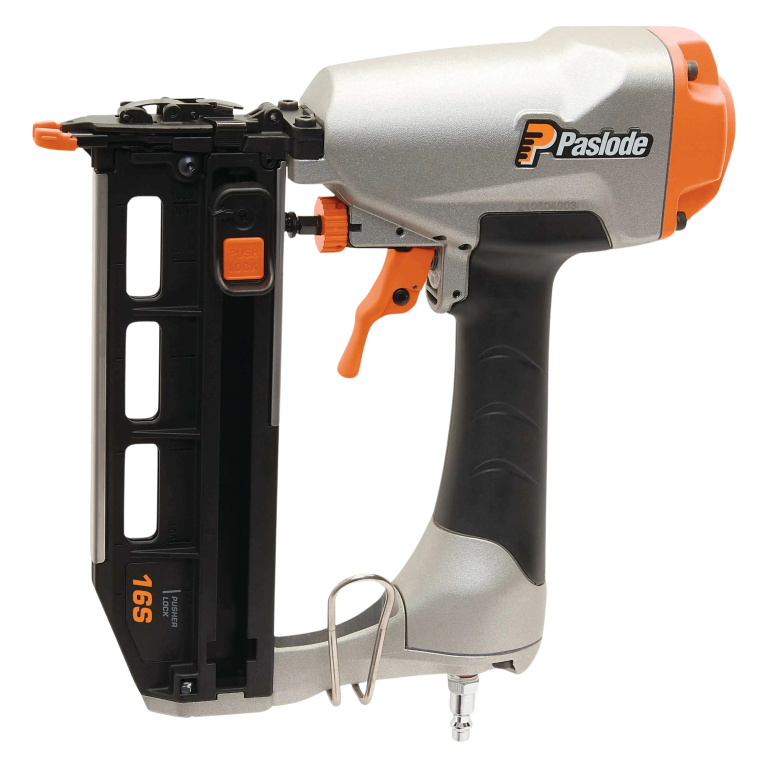

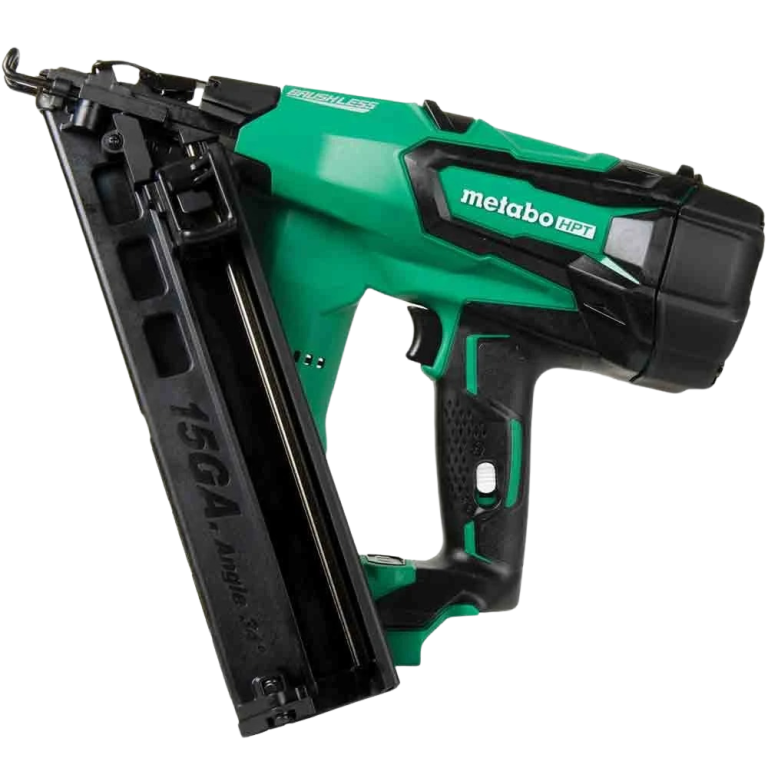

16-GA Straight / Angled Finish Nailer
With few exception all 16-gauge finish nailer have straight magazine whether it’s pneumatic or battery powered. Biggest thing to consider when it comes to buying 16 GA finish nailer is the angle of the magazine. You will see that straight magazine is perpendicular to the gun and holding the gun to the surface will give parallel space between magazine and work surface. To get best fastening result you need to hold the gun at a perfect 90 degree to your wood surface otherwise nail may not stick properly. This guns are best suited for boards and soft materials and commonly used by contractors and professionals as they are available in plenty. Another cool thing about this gun is smaller nail used in 16GA finish nailer won’t create large hole in work surface and a coat of paint can easily hide the punch hole made by it. Pneumatic one will be lighter, smaller and less expensive than the battery powered straight finish nailer.
16-gauge pneumatic powered will cost your around $40 to $180 and $180 to $450 for a cordless one.
15 GA Angled Finish Nailer
First thing you need to know about 15-gauge finish nailer is the angled magazine is tilted at 34-degree angle to gun body and drive 15-gauge thicker nail which are more suitable for job that require more holding strength. These differences play really big role in terms of gun performance and comfort. First angle of the magazine gives user point the gun and fire fasteners even in corners and tight spots where straight finish nailer would fail to reach. Secondly angled magazine can hold heavier 15-ga angled finish nails that can guarantee better stability to your woodworking projects. One downside is it creates large hole on the work surface that may need extra coating or wood putty. You will also find that nail price is considerably high compared to thinner 16 ga finish nails used in straight finish nailers. In terms of application, it can be used for installing baseboard, chair rail, door and window casing, crown molding, door frames, and more.
15-gauge pneumatic powered will cost your around $70 to $200 and $250 to $500 for a cordless one.
DA Vs. FN-Style 15-Ga Angled Finish Nails
Remember the time when two competing video format from Sony and JVC was battling to become industry standard. Betamax video format from Sony ultimately lost the battle to VHS developed by JVC. Similarly DA and FN-style finish nails are competing to be the industry standard for 15-gauge angled finish nails. Unlike the video format war, DA vs. FN war has no clear winner as both style are used in 15-ga angled finish nailer. In fact 15 ga angled finish nailers are designed to accept either DA or FN-style finish nails. Senco is credited for pioneering DA-style that is widely used in 15-ga angled finish nailer of various brands. Bostitch introduced FN-style as their answer to Senco’s DA-style, is compatible with its nailer, Makita and few other brands. There are some difference in size, shape of the nail heads and nail collation of these two competing style. However these differences have no actual effect on fastening performance.
If you’re not sure which standard is right, you might consider the fact that great number of power tool brand manufacture DA-style nails and finish nailer, while collation density of FN-style nail is higher that mean you can drive more nails with lesser number of magazine refill.
Tips
What nail size do I choose for my finish nailer?
A good rule of thumb is your fastener or nail should twice as long as what you are going through (thickness of work surface).
Essential Performance Feature of Finish Nailer
- Depth Adjustment: Most finish nailer fire up to 2-1/2 inch nail into woodworks and depth of drive adjustment allows you drive nail at desired depth. Without depth adjustment pushing nail too hard may split work surface or fail to achieve enough holding strength while pushing nail softly. Finish nailer may have a depth adjustment dial or predefined depth setting depending on model. By adjusting the depth you can leave the nails flush, protruding, sink and countersink. Also Make sure your finish nailer has a Too-free depth adjustment feature.
- Dry Fire Lock Out: This safety feature stop nailer from firing when it is empty thus prevent misfiring and accidents. Best finish nailer are designed to stop working when there are few nails left in the magazine so that you know it’s time to reload. In some model you will find low nail indicator.
- Easy Jam Clearance: Make sure your finish nailer magazine loading system is simple and features an easy jam clearing option. You will run into the situation where your nailer is jammed in the magazine. Look for tool less jam clearance option. Some model may need additional tool to release jammed nail.
- Narrow Nose Piece: Surprisingly finish nailer haven’t gone through radical changes in design since it came to the market. Power tool brands however made some change and added some feature that now allow more user comfort and precise nailing. Many brands now offer narrow nose design that help you to see where the nose tip is pointing on the surface. Also look for non-marring nose tip on nailer nose that prevent work surface damage from dry firing into the woodwork.
- Adjustable Exhaust: Power tool companies nowadays creating air tool with great user friendly features. Adjustable exhaust is one of them. With adjustable exhaust you can direct air coming from your nailer away from your body. When working in a dusty area it keeps dust and debris away from tool operator.
- Selectable Trigger & Firing Mode: Another user friendly feature that allows operator to switch between two firing method. With selectable trigger you can switch from sequential to contact firing mode just pressing a single button. Some model may require trigger to be removed and replaced with another trigger for mode change. Whereas driving single nail in work surface depend on firing method. It is also important safety feature that involve two controls- a trigger and safety contact tip working in sequence to fire single nail. Contact or bump fire mode is commonly used by professionals for fast nailing. However it may not be suitable for first time user due to risk of misfire and possible nail gun injury. Good news is best finish nailer now available in the market mostly build with contact and sequential firing mode.
- Warranty and support: You will see there is direct relationship between power tool product price and product warranty you get against that purchase. Usually most expensive one tend to provide warranty with longer duration and cheap one vice versa. Best way to find about the product you chose is read customer review, what other customer saying about its warranty and service.
- Additional Accessories: Apart from warranty and after sales service best brands in finish nailer offer carrying case, oil, hex and Allen wrench, extra no mar tip and more. This add on not only sweeten the deal but also help customer in nailer maintenance.

